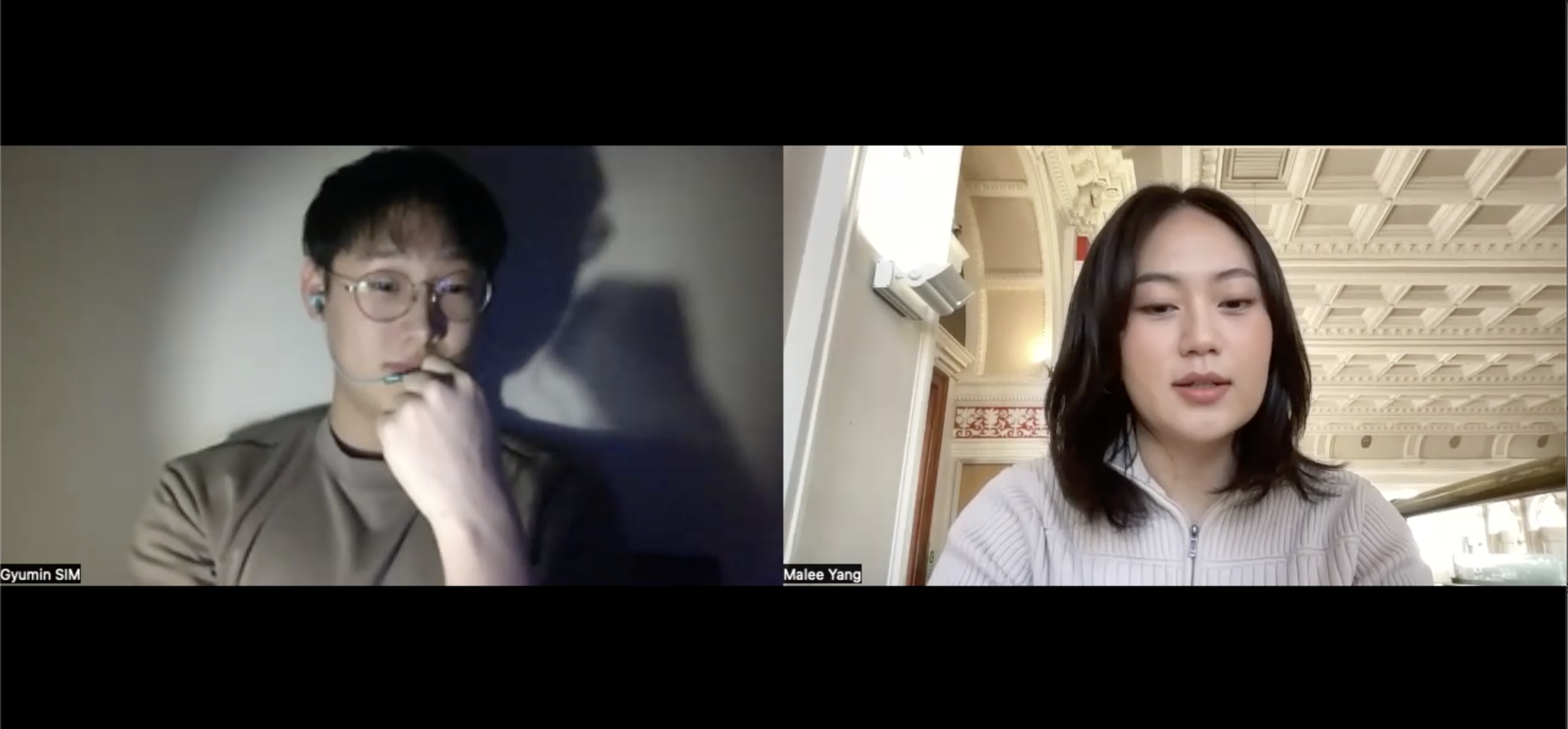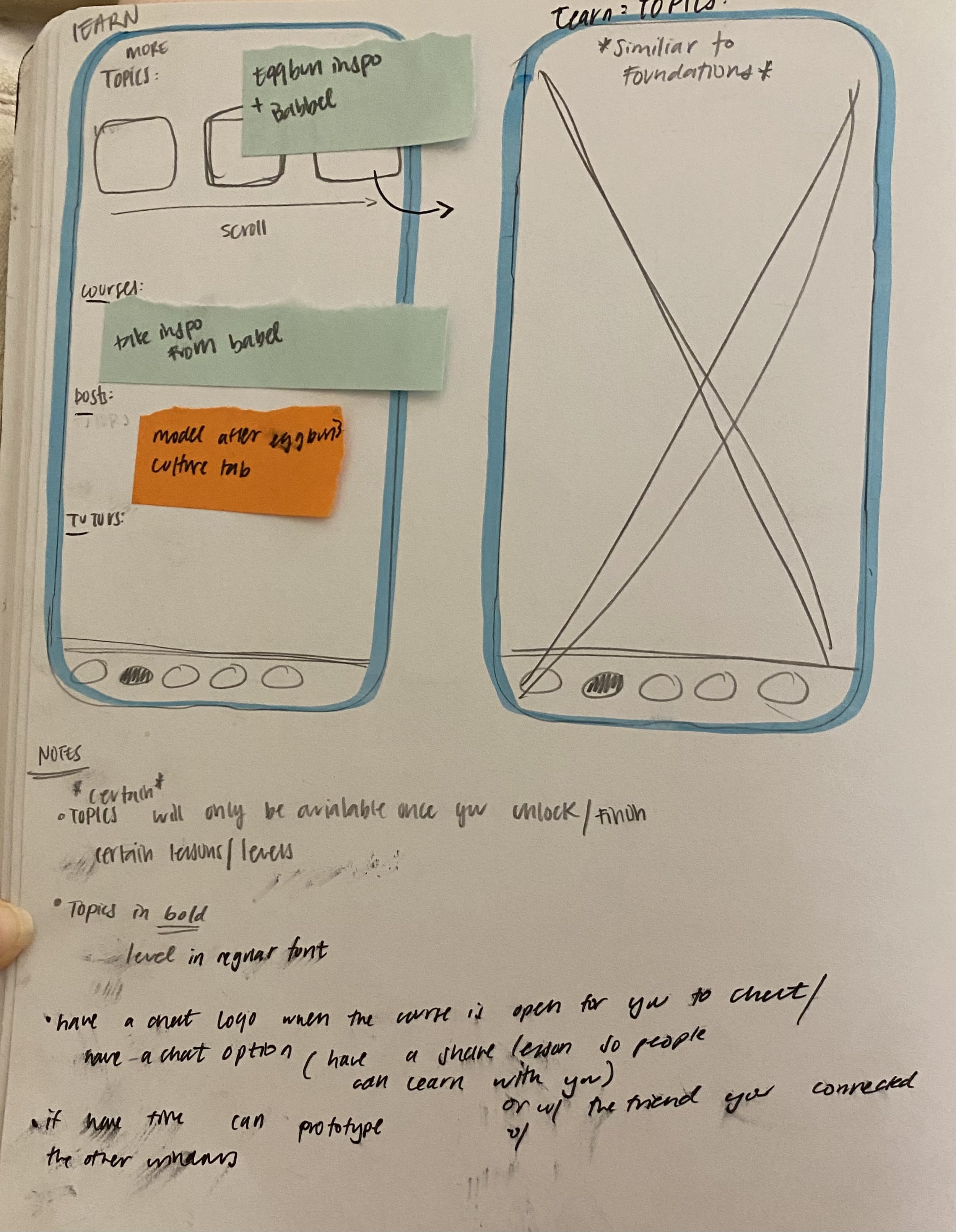BabbleBee
Language Learning App Design/ Research
Overview
The prompt of this design project was to create an application to solve a personal human-centered problem. In my time of reflection, I had to think about one thing I have been doing that never really worked out, self-learning a new language.
This app was created to allow language learners to have an environment to use the language they are learning in a real context.
Methods
Background Research
Competitive Auditing
Directed Storytelling
Prototyping
Wire framing
Deliverables
High Fidelity Prototype
Research
To start, I had to ask myself, how do we create a learning app? What helps a user learn the best and why? What are classic methods that already exist that work? I did background research and set up the basic frames and concepts that will allow a user to learn and retain language. This includes traditional lesson planning that have digestible and guided lessons paired with listening, speaking, reading, and writing exercises.
Next, I have to see what the competition is. I did a competitive audit to see competitors’ strengths/flaws. What makes each competitor unique and what did they do well to display their uniqueness? Duolingo was able to express their fun and gamey app well through vibrant colors, interactive features, and competitiveness through the usage of points and leaderboards. Rosetta Stone and Babbel had a very organized and intuitive layout. I also created an image board and analyzed how each app categorized and featured content.
After knowing what the market is, I went and talked to a few language learners through direct storytelling. These interviews focused on WHAT their language goals are and WHY? HOW do we (the app) help them attain that goal? A technique I used was laddering to understand their values (when it comes to learning languages) and what will work best for them in their context.
Finding
Users attributed the success of fully learning a new language to conversations and daily practice with native speakers. This was a key difference that I did not see any apps use to help supplement their users’ learning.
Proposed Solution
Let them talk!
Design Process
After the initial research, these were some key features I want to incorporate:
An interactive prototype that will keep users engaged
Fun!
Colors and graphics are proved to be effective
Intuitive
Guided flow would allow users to be guided through the lessons without much information
A design that helps this is the “lock” feature
Chat feature
This is a proven way for learners to retain language
Site Map
This sitemap was developed through research that focused on understanding the fundemental requirements to successfully learn a language. This research helped determine the structure of my mobile app-led language learning platform. Through a synthesis of the findings, I found that it was important to categorize the main components in the following manner: a dedicated section for the primary lessons encompassing phonology, morphology, syntax, semantics, and pragmatics of a language. Supplementary lessons that complement the main curriculum, and a personalized "Me" page to monitor and comprehend the user’s progress. Additionally, I have included a chat feature to facilitate the application of newly acquired knowledge and provide a platform for users to practice and engage with the language in a practical context.
User Flow
Wire Frame
Home Page
Learn Page
Me Page
Chat Page
Final Product
Next Steps
Work with Language Instructors to not only understand the concepts of learning but to also create materials and lessons that is easy to digest
Usability Testing on new and old learners
AI chat Research














